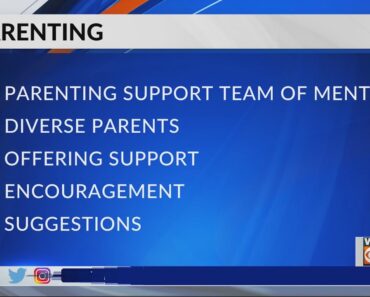A baby born before 28 weeks of gestation and weighing less than 1000 grams is known as a micro-preemie (1). Because of their small size and low birth weight, some micro-preemies develop complications and require round-the-clock care in the neonatal intensive care unit (NICU).
As micro-preemies are still in their developmental stage, they may have to deal with risks related to underdeveloped lungs and immature immune systems. This is why doctors generally try to sustain pregnancy and delay premature delivery as much as possible. Despite their best efforts, if the baby is born a micro-preemie, they would need exceptional care until their body can sustain itself outside the womb.
Although most micro-preemies grow up to be normal babies, some may face health complications. If you are looking for more information about micro-preemies, then this post is for you. Read on as we tell you the causes and the short-term and long-term risks and complications for micro-preemies.
Causes Of Micro-Preemie
There could be many reasons for premature delivery, and most of them happen spontaneously. According to the World Health Organization (WHO), some of the common causes of preterm births include:
- Multiple pregnancies
- Infections
- Gestational diabetes
- Preeclampsia
- Genetics
- Previous premature deliveries(2)
If you have any of the above conditions, keep in touch with your doctor to avoid premature delivery.
As micro-preemies are at a higher risk of developing complications, their survival rate is also critical. Read the next section to find out the survival rate for micro-preemies.
Survival Rates For Micro-Preemies
Micro-preemies are fragile and are at risk of developing many complications. The chances of survival increase with each day the baby spends inside the womb up to full-term (3).
| Birth Week | Average Survival Rate |
| 24 weeks | 40% |
| 25 weeks | 50% |
| 26 weeks | 60% |
| 27 weeks | 70% |
| 28 weeks | 80% |
Each baby is different; thus, this table is only indicative of the risk factors that need to be understood at each gestational week. The chances of survival depend on many factors, and sometimes, babies who are less than 22 weeks may also survive. Your doctor is the best person to help you understand the condition of your newborn. Have an open discussion and clear all your doubts.
What Are The Devices Connected To A Micro-Preemie?
Seeing a micro-preemie inside the NICU may not be a pretty sight. Their body will be tiny, with visible veins. You will also find the below equipment attached to support various functions of their body.
As their lungs are underdeveloped, micro-preemies need external ventilation support to help them breathe. Usually, endotracheal tubes (ET tubes) work as an interface between the baby and the ventilator and help them breathe. These tubes pass through the vocal cords and come out of their mouth. If the baby can breathe independently, then lesser invasive methods, such as the continuous positive airway pressure (CPAP), where a mask is strapped to the baby’s mouth, are used (4).
Micro-preemies generally do not suck efficiently and lack coordination between sucking, swallowing, and breathing(5), so they are fed using external feeding tubes, such as a nasogastric tube (NG) and orogastric tubes. These tubes go from their mouth into the stomach.
Micro-preemies also need continuous IV fluids over a long period as their bodies are not yet ready to absorb nutrients. A percutaneously inserted central catheter (PICC) ensures a constant flow of IV fluids. The catheter is inserted into a small vein on the leg or arm and then moved into a larger vein (6).
Jaundice is a common complication in micro-preemies, so phototherapy is used to treat neonatal jaundice in the case of micro-preemies. In this therapy, the baby is placed under lamps emitting 400–500 nanometers light that contains no UV light (7).
Micro-preemies need to be continuously monitored to understand if their body is getting better and becoming more adaptable to survive. Many devices are connected to the incubator and your baby, which constantly monitor them and send data. The incubators also have alarm systems in place to alert any abnormalities. Some of the monitoring devices used include cardiorespiratory monitor, blood pressure monitor, temperature pulse oximeter, transcutaneous oxygen, and carbon dioxide monitor (8).
Next, we tell you about the various risks and complications micro-preemies face. For easy understanding, we have grouped these into long-term and short-term risks and complications.
Possible Short-Term Health Risks And Complications For Micro-Preemies
Certain short-term health issues in micro-preemies are seen immediately after birth or during their stay in the NICU. The doctors carefully monitor them to resolve these issues.
1. Patent ductus arteriosus (PDA)
In a developing infant, the pulmonary artery and the aortic arch are connected by a vascular shunt called ductus arteriosus. It diverts the fluids from the right ventricular and prevents it from entering the lungs. In full-term infants, this shunt closes within a few hours of birth, whereas in micro-preemies, this process is delayed and can cause:
- Cardiovascular instability
- Respiratory distress syndrome
- Intraventricular hemorrhage
- Renal dysfunction
- Cerebral palsy
Treatment: Medical therapy with cyclo-oxygenase inhibitors, such as indomethacin and ibuprofen, is the mainstay treatment option for PDA. Surgical interventions are also done for babies who do not respond to medical treatment (9).
2. Respiratory distress syndrome (RDS)
Infants born before the 28th week of pregnancy are at risk of developing respiratory distress syndrome. It is a breathing difficulty caused due to insufficient surfactant in the lungs, causing the tiny alveoli to collapse. Sometimes, conditions such as PDA, multiple pregnancies (twins), cold stress, infection, and gestational diabetes in the mother may increase the risk of RDS in micro-preemies. A few symptoms of RDS are:
- Breathing problems
- Cyanosis (blue coloration of the skin)
- Flaring nostrils
- Pulling in of ribs and breast bones while breathing
- Grunting sounds while breathing
The symptoms usually occur immediately after birth, worsen by the second or third day, and get better with treatment.
Treatment: The treatment options include inserting a breathing tube, ventilator breathing, supplemental oxygen, surfactant replacement, and continuous positive airway pressure (10).
3. Neonatal sepsis
Micro-preemies have an immature immune system, making them susceptible to infections that could lead to neonatal sepsis. The bacterial infection can be transmitted from the mother to the baby or during any surgical procedures. Sepsis may be classified into early-onset (occurs from birth to seven days) and late-onset (develops within seven to 30 days of birth). Neonatal sepsis is characterized by:
- Fever
- Vomiting
- Diarrhea
- Cyanosis
- Tachycardia
- Hypotension
- Seizures
- High-pitched cry
- Jaundice
Treatment: Neonatal sepsis should be identified and treated as it may cause mortality. The treatment includes antibiotic therapy to fight the infection. The baby’s vitals and blood should be monitored continuously for antibiotic toxicity (11).
4. Retinopathy of prematurity (ROP)
This is a potentially blinding eye disorder that may occur in micro-preemies. The blood vessels in a premature baby are underdeveloped. When these blood vessels grow, they spread throughout the retina. These newly formed and fragile blood vessels may leak, scar the retina, and cause retinal detachment. ROP is classified into five stages, ranging from mild to severe. There are no early symptoms of ROP, and some late symptoms include:
- Unusual movement of the eyes
- White pupils
- Vision loss
Treatment: Based on the stage, surgical intervention, such as laser therapy or cryotherapy, is recommended. If the detachment is partial, it may heal without treatment (12).
5. Intraventricular hemorrhage (IVH)
It is a condition in which the blood vessels within the germinal matrix rupture and disrupt the cerebral blood flow. IVH occurs within three days or one week of birth and is found during the routine ultrasound scans during the third or seventh day. It is one of the major complications in micro-preemies and could reduce the survival rate and increase many neurological defects. IVH is divided into four grades based on the degree of bleeding. There may not be specific symptoms, but some common symptoms include:
- Breathing difficulties
- Decreased reflex and muscle tone
- Changes in blood pressure and heart rate
- Lethargy and excessive sleep
- Seizures
Treatment: Although there is no way to stop the bleeding, the NICU team will try to keep the situation stable by treating the symptoms and, if needed, place a spinal tap to drain the excess fluid to relieve the pressure on the brain. Micro-preemies with this condition are closely monitored until they reach at least three years old. This complication can be prevented by giving the mother corticosteroids before birth (13).
6. Necrotizing enterocolitis (NEC)
This is a common intestinal inflammatory disease found in micro-preemies with low weight. As the digestive systems of premature babies are underdeveloped, they are susceptible to infections. In NEC, the lining of the intestine gets affected and begins to die. The symptoms are hard to diagnose, as they are similar to other complications. Some common symptoms include:
- Body temperature fluctuations
- Lethargy
- Breathing difficulties during sleep (apnea)
- Mildly swollen abdomen
- Blood in stools
This complication occurs in three stages, wherein the last stage comprises deterioration of vital signs, gastrointestinal bleeding, and septic shock.
Treatment: It is important to identify NEC early on to help prevent its devastating effects. Treatment options include gastric decompression and antibiotic treatment. Surgical intervention may be recommended if the condition does not respond to medications (14) (15)
These are some of the short-term risks and complications that might occur in a micro-preemie. The doctors would carefully monitor the baby and treat these conditions before discharging them. On average, a micro-preemie may have to stay for two to three weeks in the hospital. However, this period might extend or reduce based on the progress made by the baby.
A micro-preemie may also have some long-term health issues that might show up once they are sent home. So, it is important to monitor your baby carefully and take them for regular consultations. However, these complications may not occur in all micro-preemies. Read the next section to understand some long-term complications and risks of micro-preemie.
Long-Term Complications Of Micro-Preemie
Micro-preemies are at risk of developing long-term complications that may continue into adulthood. However, this may not be the case for all micro-preemies because some babies would meet milestones and develop normally after getting discharged from the NICU. It is important to understand the various issues faced by micro-preemies.
1. Developmental delays
Preterm birth is associated with some long-term risk factors that might affect the child’s cognitive and intellectual development, which may persist into adulthood. Studies state that preterm babies born with very low weight report persistent social problems between the ages of five and ten. Positive parenting during early childhood and maternal sensitivity might help them improve. However, developmental delays in preterms need more research (16).
2. Cerebral palsy
Micro-preemies are at a higher risk of developing cerebral palsy. Studies state that about seven to 20 percent of micro-preemies have cerebral palsy (17). Cerebral palsy consists of a group of disorders that affect body movement, posture, and balance.
3. Digestive issues
Digestive issues such as constipation, colic, and gastroesophageal reflux are found more in micro-preemies than full-term babies. It could be because premature babies are bottle-fed, and they have poor muscle tone and immature gut function. If your child shows signs of digestive issues, consult your pediatrician (18).
4. Chronic lung disease
Lungs are one of the last organs to form in a baby. This is why most micro-preemies have underdeveloped lungs at the time of birth. A premature baby is kept under a ventilator to assist its breathing. Sometimes, the ventilator might damage the baby’s fragile lungs, causing chronic lung disease. It is characterized by flaring nostrils, fast breathing, grunting, and chest retractions (19).
5. Auditory issues
Hearing impairments are seen in micro preemies due to the neurodevelopmental defects associated with premature birth. Studies state that one to three in 1000 live premature babies have an incidence of permanent hearing loss (20).
Micro-preemies face many complications, so doctors always try to avoid preterm delivery. The World Health Organization (WHO) has issued the below guidelines to improve preterm birth outcomes.
- Use of corticosteroids before birth to accelerate the development of the lungs
- Use of antibiotics before the breakage of water and the onset of the labor
- Administration of magnesium sulfate to prevent future neurological impairments (2)
How Can You Help A Micro-Preemie To Have A Better Outcome?
You can do a few things to help a micro-preemie have a better outcome and improve their survival chances.
- If you suspect a premature birth, look for a hospital with a level III NICU and 24-hour neonatology coverage.
- Identification of the common signs of preterm labor would also help you and the baby get timely medical care. Some signs include regular contractions before the term, cervical changes, pelvic pressure, menstrual-like cramps, watery vaginal discharge, and lower back pain (21).
- Seeking early interventions that involve supporting parents to improve the infant’s environment and educating the parents in caring for preterm infants can positively reduce the risk of neurodevelopmental disabilities (22).
How To Take Care Of A Micro-Preemie While In The NICU?
It can be quite stressful for the parents when the baby is born preterm and in the NICU. It would be difficult for the parents to see the baby surrounded by monitors and machines. You would want to help the baby in whatever way possible. However, you need to be extremely careful while handling a micro-preemie. Here are a few ways in which you could help your micro-preemie while they are in the NICU.
- Ask the NICU nurse or your doctor if it is ok to hold your baby. Even if you cannot hold them, you can always touch them. Be with them or even sing to them.
- You can breastfeed or bottle-feed your baby as soon they are old enough to feed without the feeding tubes. If your baby is still on feeding tubes, pump the breast milk, and feed them.
- Skin-to-skin contact, also called kangaroo care, is a method that has many advantages for the mother and the premature baby. It helps stabilize the infant’s heart rate and temperature, decrease arousal and REM sleep, promote a better sleep-wake cycle, assist in successful breastfeeding, etc. If your doctor has given you a green signal for kangaroo care, do administer it regularly (23).
- If you are required to leave the NICU, trust that your baby is in good hands and use this time to prepare yourself and the family for the baby’s arrival.
Having a premature delivery and a micro-preemie in NICU can take a toll on the parents. We agree it is not easy to deal with such a situation. However, the physical and mental health of the parents is equally important. Here are a few things you could do:
- Talk to your doctor and discuss with them about your baby’s progress.
- Do not neglect your own needs; do something relaxing, such as reading a book or going for a walk.
- Turn to family and friends for support. Reach out to them and share your feelings with them.
- If you are still feeling stressed, talk to a therapist for support and guidance.
- Read success stories of micro-preemies or talk to other parents who have gone through the same situation.
A micro-preemie might face many health complications during and after birth, so it is important to understand the health issues and how you can help your baby. While this whole situation can be extremely stressful, it is equally rewarding to see your little fighter defy all odds and grow into a healthy and happy baby.
References:
2. Preterm birth; World Health Organization
3. T H H G Koh, H Harrison, and A Casey; Prediction of survival for preterm births; The British Medical Journal (2000).
4. Breathing support for premature babies; Tommy’s
5. Nasogastric Versus Orogastric Route of Feeding in Preterm; ClinicalTrails.gov
6. Percutaneously inserted central catheter – infants; Medline Plus
7. Phototherapy; Sydney Local Health District
8. A Survey on Neonatal Incubator Monitoring System; Journal of Physics: Conference Series
9. Olachi J. Mezu-Ndubuisi, et al.; Patent Ductus Arteriosus in Premature Neonates; HHS Author Manuscript (2012).
10. Respiratory Distress Syndrome (RDS) in Premature Babies; Stanford Children’s Health
11. Chandan Kumar Shaha, et al.; Neonatal sepsis – a review; Bangladesh J Child Health (2012).
12. Retinopathy of Prematurity; National Eye Institute
13. Intraventricular hemorrhage of the newborn; MedlinePlus
14. Katherine E. Gregory, et al.’ Necrotizing Enterocolitis in the Premature Infant; HHS Author Manuscript (2011).
15. Mashriq Alganabi, et al.; Recent advances in understanding necrotizing enterocolitis; F1000Research (2019).
16. Norbert Zmyj, et al.; Social Cognition in Children Born Preterm: A Perspective on Future Research Directions; Frontiers in Psychology (2017).
17. Maria Hafström, et al.; Cerebral Palsy in Extremely Preterm Infants; Pediatrics- Official Journal of The American Academy of Pediatrics (2018).
18. Your premature baby’s digestion; Tommy’s
19. Chronic Lung Disease in Premature Babies; University of Rochester Medical Center
20. Jung Ho Han, MD, et al.; Hearing Impairments in Preterm Infants: Factors Associated with Discrepancies between Screening and Confirmatory Test Results; Neonatal Medicine (2020).21. NAMES
21. Vrishali Suman; Preterm Labor; Statpearls
22. Karen M Benzies, et al.; Key components of early intervention programs for preterm infants and their parents: a systematic review and meta-analysis; British Medical Journal (2013).
23. Ann L Jefferies; Kangaroo care for the preterm infant and family; Pediatric Child Health (2012).

































